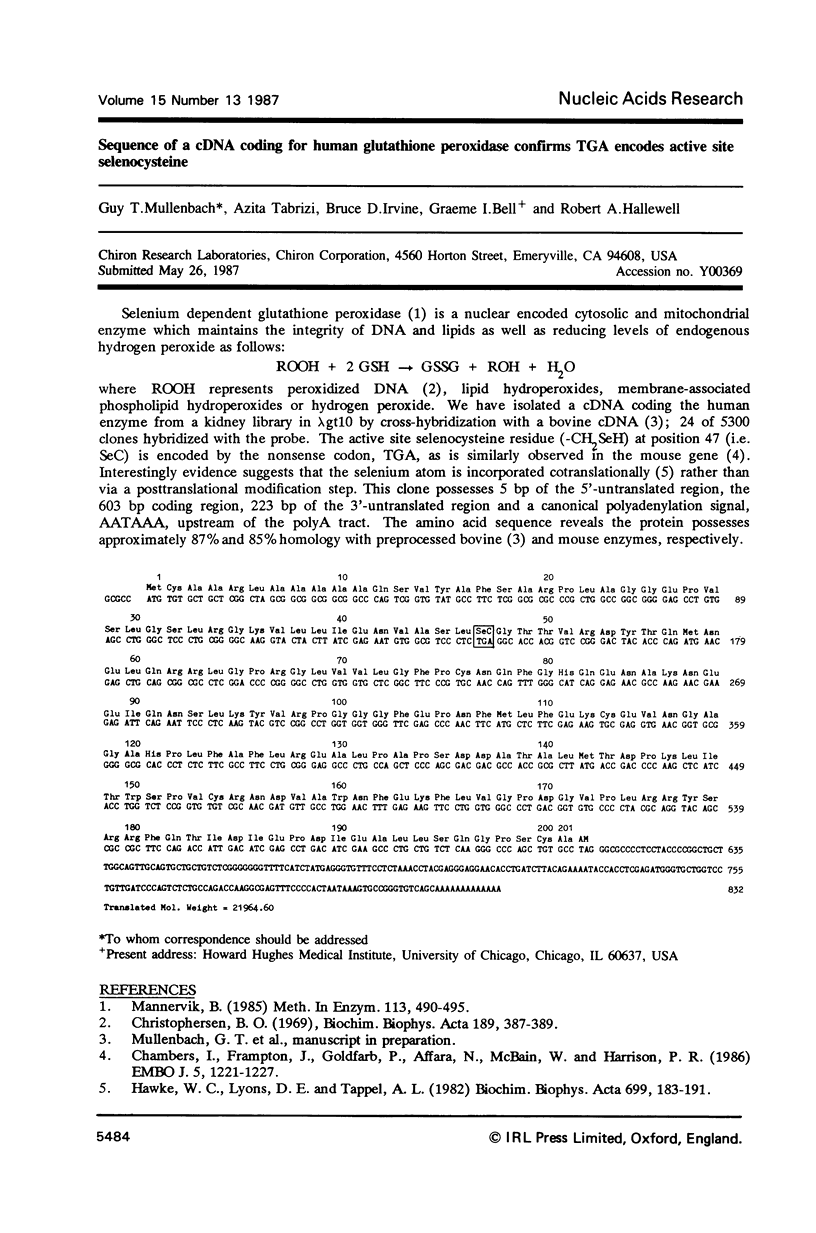Full text
PDFPage 5484

Selected References
These references are in PubMed. This may not be the complete list of references from this article.
- Chambers I., Frampton J., Goldfarb P., Affara N., McBain W., Harrison P. R. The structure of the mouse glutathione peroxidase gene: the selenocysteine in the active site is encoded by the 'termination' codon, TGA. EMBO J. 1986 Jun;5(6):1221–1227. doi: 10.1002/j.1460-2075.1986.tb04350.x. [DOI] [PMC free article] [PubMed] [Google Scholar]
- Christophersen B. O. Reduction of X-ray-induced DNA and thymine hydroperoxides by rat liver glutathione peroxidase. Biochim Biophys Acta. 1969 Aug 20;186(2):387–389. doi: 10.1016/0005-2787(69)90017-3. [DOI] [PubMed] [Google Scholar]
- Hawkes W. C., Lyons D. E., Tappel A. L. Identification of a selenocysteine-specific aminoacyl transfer RNA from rat liver. Biochim Biophys Acta. 1982 Dec 31;699(3):183–191. doi: 10.1016/0167-4781(82)90106-3. [DOI] [PubMed] [Google Scholar]
- Mannervik B. Glutathione peroxidase. Methods Enzymol. 1985;113:490–495. doi: 10.1016/s0076-6879(85)13063-6. [DOI] [PubMed] [Google Scholar]


